[New to the Journey? Read this for a brief introduction!]

by Kaye Dee
Recently, The Traveller covered the launch of the TIROS-M weather satellite, noting that the rocket’s payload also included a small Australian-made ham radio satellite, OSCAR-5 (Orbiting Satellite Carrying Amateur Radio), also known as OSCAR-A.
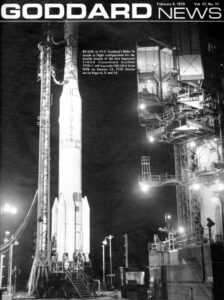 Cover of NASA's Goddard Space Flight Centre's in-house magazine, marking the launch of ITOS-1/TIROS-M and Australis-OSCAR-5
Cover of NASA's Goddard Space Flight Centre's in-house magazine, marking the launch of ITOS-1/TIROS-M and Australis-OSCAR-5
A New Star in the Southern Cross
It was exciting to be in “Mission Control” at the University of Melbourne when the satellite was launched in the evening (Australian time) on 23 January. You should have heard the cheers! After all, Australis-OSCAR-5 (AO-5), as we call it, is Australia’s second satellite. It’s also the first amateur radio satellite built outside the United States and the first OSCAR satellite constructed by university students – in this case, members of the Melbourne University Astronautical Society (MUAS).
 The MUAS student team with the engineering model of Australia's first amateur radio satellite
The MUAS student team with the engineering model of Australia's first amateur radio satellite
Radio Hams and Satellite Trackers
Commencing in 1961, the first OSCAR satellite was constructed by a group of American amateur radio enthusiasts. Cross-over membership between MUAS and the Melbourne University Radio Club (MURC) encouraged the students to begin tracking OSCAR satellites, moving quickly on to tracking and receiving signals from many other US and Soviet satellites.
 Nimbus satellite image of the western half of Australia received by MUAS for the weather bureau
Nimbus satellite image of the western half of Australia received by MUAS for the weather bureau
One of MUAS’ achievements was the first regular reception in Australia of images from TIROS and Nimbus meteorological satellites. By 1964, they were supplying satellite weather images daily to the Bureau of Meteorology, before it established its own receiving facilities.
"How Do We Build a Satellite?"
After tracking OSCARs 3 and 4 in 1965, the MUAS students decided to try building their own satellite. “No one told us it couldn’t be done, and we were too naive to realise how complex it would be to get the satellite launched!”, an AO-5 team member told me at the launch party. MUAS decided to build a small ‘beacon’ satellite which would transmit telemetry data back to Earth on fixed frequencies.
Even before Australia’s first-launched satellite, WRESAT-1, was on the drawing board, the Australis satellite project commenced in March 1966. Volunteers from MUAS, MURC and university staff worked together to design and build the satellite, with technical and financial assistance from the Wireless Institute of Australia and a tiny budget of $600. The Australian NASA representative also gave the project invaluable support. The students acquired electronic and other components through donations from suppliers where possible: the springs used to push the satellite away from the launcher were generously made by a mattress manufacturer in Melbourne. Any other expenses came out of their own pockets!
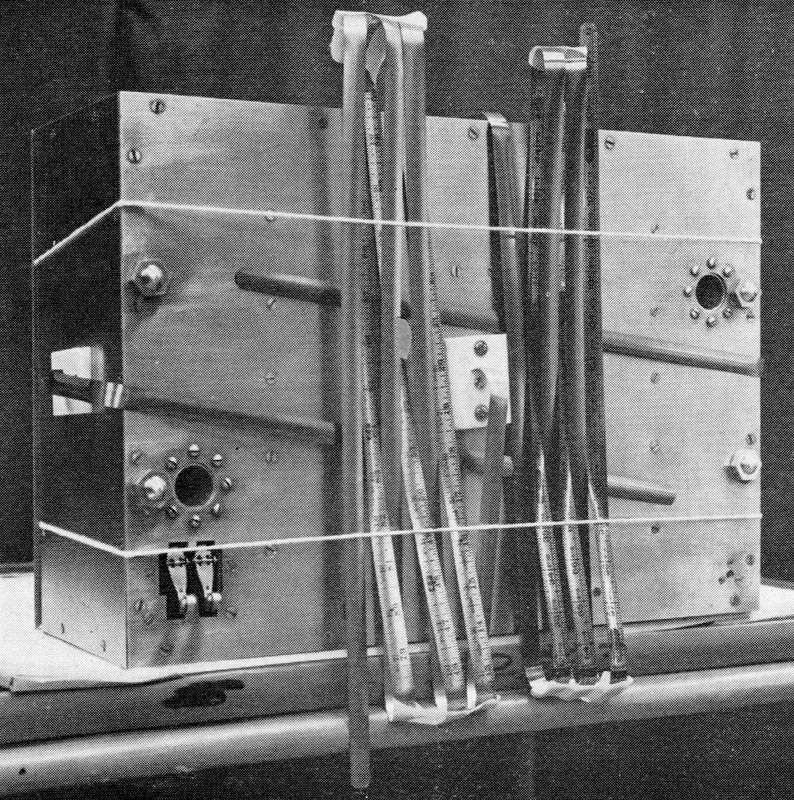 Carpenter's steel tape was used to make AO-5's flexible antennae, seen here folded in launch configuration. Notice the inch markings on the tape!
Carpenter's steel tape was used to make AO-5's flexible antennae, seen here folded in launch configuration. Notice the inch markings on the tape!
AO-5 is a fantastic example of Aussie ‘make-do’ ingenuity. A flexible steel measuring tape from a hardware shop was cut up to make the antennae. The oven at the share house of one team member served to test the satellite’s heat tolerance, and a freezer in the university's glaciology lab was unofficially used for the cold soak. Copper circuit boards were etched with a technique using nail varnish, and a rifle-sight was used to help tune the antennae! Various components, including the transmitters and command system, were flight-tested on the university’s high altitude research balloon flights.

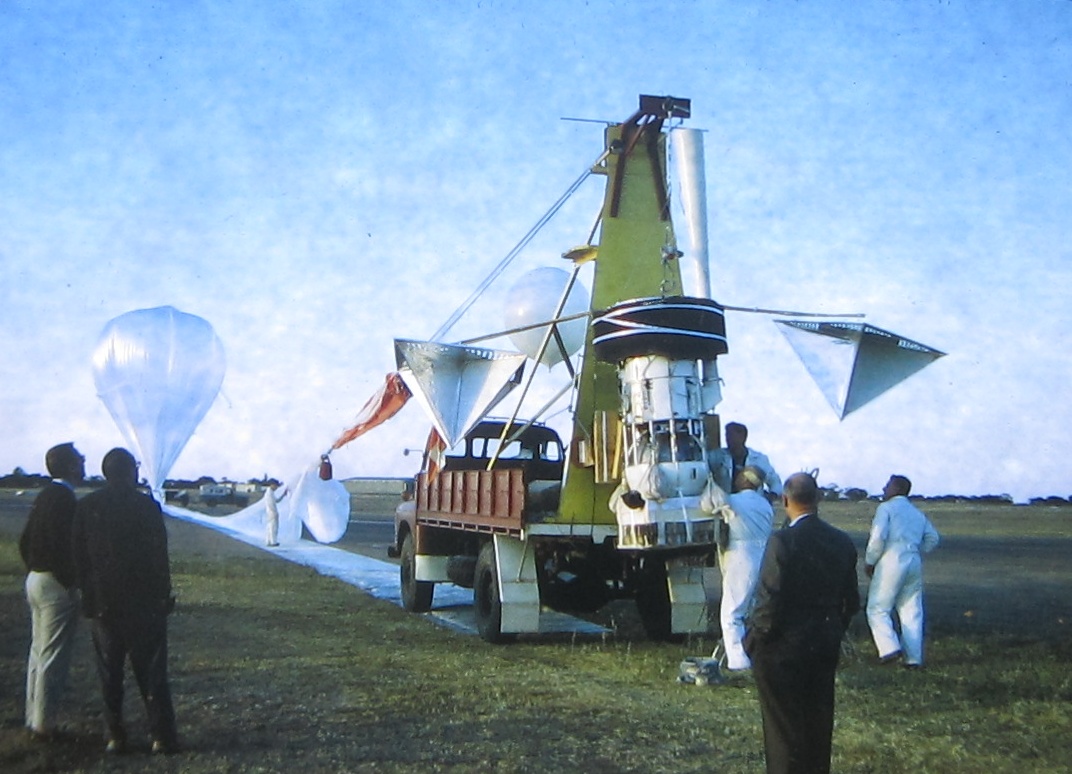
A university lab freezer and hitching a ride with university experiments on US HiBal high altitude balloon flights in Australia used to test the ruggedness of AO-5 components
A Long Wait for Launch
Australis was completed and delivered to Project OSCAR headquarters in June 1967, well before WRESAT’s launch in November that year. Unfortunately, AO-5 then had to wait a few years for a launch to be arranged by the Amateur Radio Satellite Corporation (AMSAT), which now operates the OSCAR project. However, it is surely appropriate that, as OSCAR-5, it finally made it into orbit with a weather satellite.
After launch from Vandenberg Air Force Base, AO-5 was placed into a 115-minute orbit, varying in altitude between 880 – 910 miles. This means it will be in orbit for hundreds of years – unlike the short-lived WRESAT.
In Orbit at Last!
Battery-powered, Australis-OSCAR-5 weighs only 39 pounds and carries two transmitters, beaming out the same telemetry signal on the two-metre and 10-metre amateur radio bands. Its telemetry system is sophisticated but designed for simple decoding without expensive equipment. The start of a telemetry sequence is indicated by the letters HI in Morse code, followed by data on battery voltage, current, and the temperature of the satellite at two points as well as information on the satellite's orientation in space from three horizon sensors.
AO-5 includes the first use in an amateur satellite of innovations such as a passive magnetic attitude stabilisation system (which helps reduce signal fading), and a command system to switch it on and off to conserve power. Observations are recorded on special standardised reporting forms that are suitable for computer analysis.
Just 66 minutes after launch, the first signal was detected in Madagascar and soon other hams reported receiving both the two and 10-metre signals on the satellite's first orbit. At “Mission Control” in Melbourne, we were thrilled when MURC members managed to pick up the satellite’s signals! By the end of Australis’ first day of operation, AMSAT headquarters had already received more than 100 tracking, telemetry and reception reports.
 A selection of local newspaper cuttings following AO-5's launch. There was plenty of interest here in Australia.
A selection of local newspaper cuttings following AO-5's launch. There was plenty of interest here in Australia.
The two-metre signal failed on 14 February, but the 10-metre transmission continues for now. How much longer AO-5’s batteries will last is anybody’s guess, but the satellite has proven itself to be a successful demonstration of the MUAS students’ technical capabilities, and the team is already contemplating a more advanced follow-on satellite project.

This philatelic cover for the ITOS-1/TIROS-M launch, includes mention of AO-5, but the satellite depicted is actually OSCAR-1

by Gideon Marcus
Fantastic emanations on Earth
And now that you've had a chance to digest the latest space news, here's some less exciting (but no less necessary) coverage of the latest issue of F&SF.
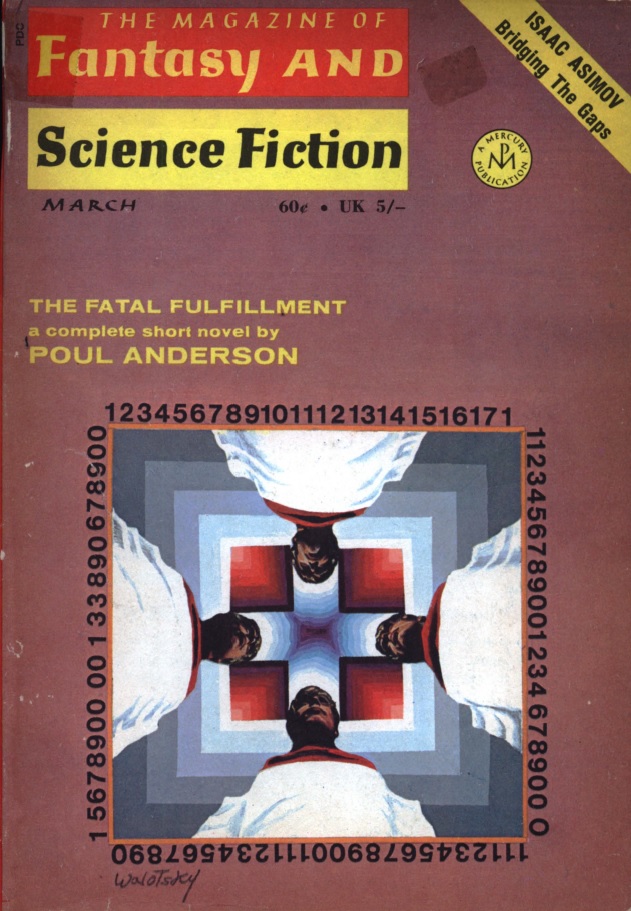
by Ronald Walotsky
The Fatal Fulfillment, by Poul Anderson
Well, this is very interesting. You remember that Ellison story that impressed me so much this month? The Region Between, it was called. Well, it has an intriguing genesis. I'll let editor Ed Ferman explain:
Five of science fiction's best storytellers were asked to write a novella beginning from a common prologue (written by Keith Laumer), to be combined in a book called Five Fates. The Anderson story and one by Frank Herbert (coming up soon) will be published in F&SF. We suggest that you look for the book (out in August from Doubleday) in order to catch up with the others: by Keith Laumer, Gordon Dickson and Harlan Ellison.
The prologue, as you may recall, involves a fellow named Douglas Bailey being euthanized. We don't know why he goes there, but he ends up very much dead. In the Ellison story, he goes on to have his soul stuffed in a series of different bodies (five of them described in detail) until he rebels against his puppetmaster and becomes God.
Anderson's story is different.
Bailey in his tale is suffering from insanity brought on by the burgeoning population, stifling technology, and all the other bugaboos of modern society. Each of his fates (five of them! I see a motif developing) involves a different "cure" for his malady. The first was obviously destruction. The second involves radical therapy. A third involves government subsidy. Number four takes place in a post-pandemic world where the remaining 5% of humanity is enlightened to a degree that precludes craziness.
The fifth, well… that explains what's going on. Anderson lays the crumbs such that, if you don't figure it out by the end, you'll at least find the conclusion well set up.
It's not a bad piece, though not nearly as gripping as Ellison's. Moreover, it's one of those that makes you go "why bother" for too long before you realize Poul's actually got a point to his meanderings.
Three stars.
Books , by Gahan Wilson

F&SF's (and Playboy's, and who knows how many other magazine's) illustrator returns to host the book review column. All are collections/anthologies, and none are SFnal (being either horror or mystery in genre). He does spent a good page expressing discomfort at how universally misogynistic the stories in Splinters: A New Anthology of Macabre Modern Fiction are, noting that virtually all the tales feature evil women who get their gruesome comeuppance. He concludes the review by conceding that many of the stories are excellent, and that readers of the macabre will enjoy the volume, but suggests that the next such volume should be misandrist to compensate.
I bring this up because time and again (and again, and again) the Journey has been criticized for just this sort of column—daring to impugn the worth of a work simply because it treats women badly. Indeed, we are often told that "no one cares" about such things.
We do, and obviously others do, too.

The Night of the Eye, by Dennis Etchison
A fellow is driven off the road by Death in a Car. He survives, but upon being driven home from the hospital by his harridan wife, Death reappears.
A nothing story. Not even frightening. One star.
Harvest, by Leo P. Kelley
If you read Joanna Russ' Initiation in last month's issue, then you already know the premise for this similar story: humans from Earth are making planetfall on a remote colony where the settlers' descendants have widely diverged from the original stock.
In this case, the colonists were involuntary emigrés from an overpopulated Earth, and the incoming ship holds the last vestiges of humanity fleeing from an exploded Sun.
I spent the whole time waiting for the author to drop the other shoe—the way humanity on this new world had changed such that they would be repugnant to the newcomers.
It wasn't worth the wait. Two stars.
The Falls of Troy, by L. Sprague de Camp

Did the Troy of The Iliad exist? The answer is a maddening mix of "yes", "no", and "not exactly"—for there were no fewer than nine Troys, all with their unique history and character. F&SF writer and historian, De Camp, offers up a fascinating, if all-to-brief, summary of what we know about the history of the hill towns on Hissarlik.
Invaluable stuff to the amateur classicist. Five stars.
Fun-Nee, by Miriam Allen deFord
Sort of a children's tale, it's all about the importance of tolerance, especially on an alien world where the two races are just different enough to elicit physical revulsion, but close enough to be good friends anyway.
A little simple, and perhaps mawkish, but then, I like happy endings.
Three stars.
The Chameleon, by Larry Eisenberg
A politician with a talent for exactly meeting expectations runs afoul of a focus group with too many conflicting desires.
Short, fun, and to the point.
Three stars.
Bridging the Gaps, by Isaac Asimov

The Good Doctor explains how elements fit in the Periodic Table… without really explaining why. I just don't get chemistry, and he's not making it any easier.
Three stars.
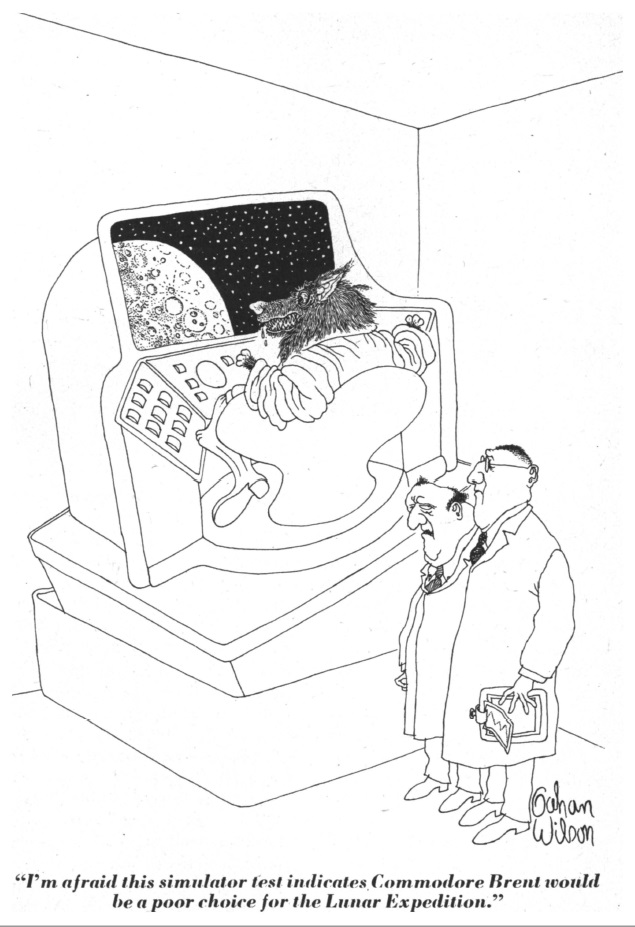
by Gahan Wilson
The Tangled Web of Neil Weaver, by Charles Miller
Pretty typical Satanism/voodoo tale about a college kid on the make who crosses a co-ed coven leader when he tries to bed a young witch. There are no heroes in this admittedly well-told story.
Three stars.
Tuning in
All in all, this is one of those issues that sounds worse than it was. It was diverting enough, just not stellar. Given the low lows we've had, this is perfectly acceptable. Let's just try to up the average next month!
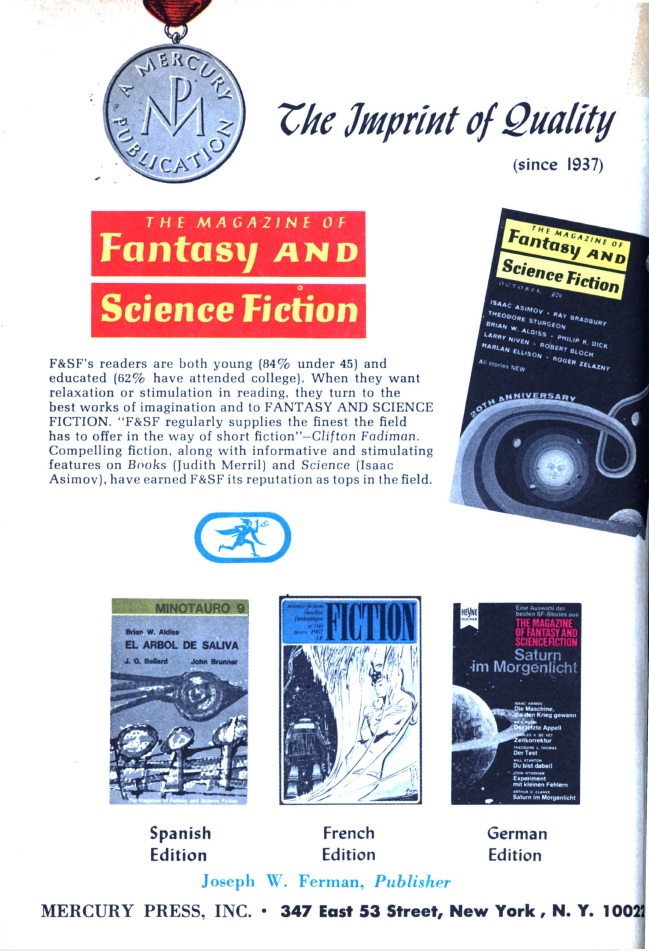
[New to the Journey? Read this for a brief introduction!]

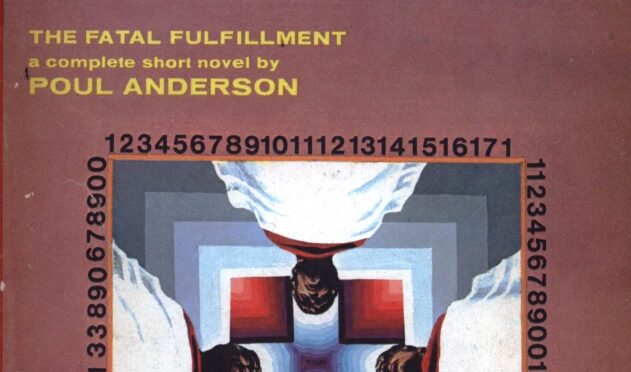

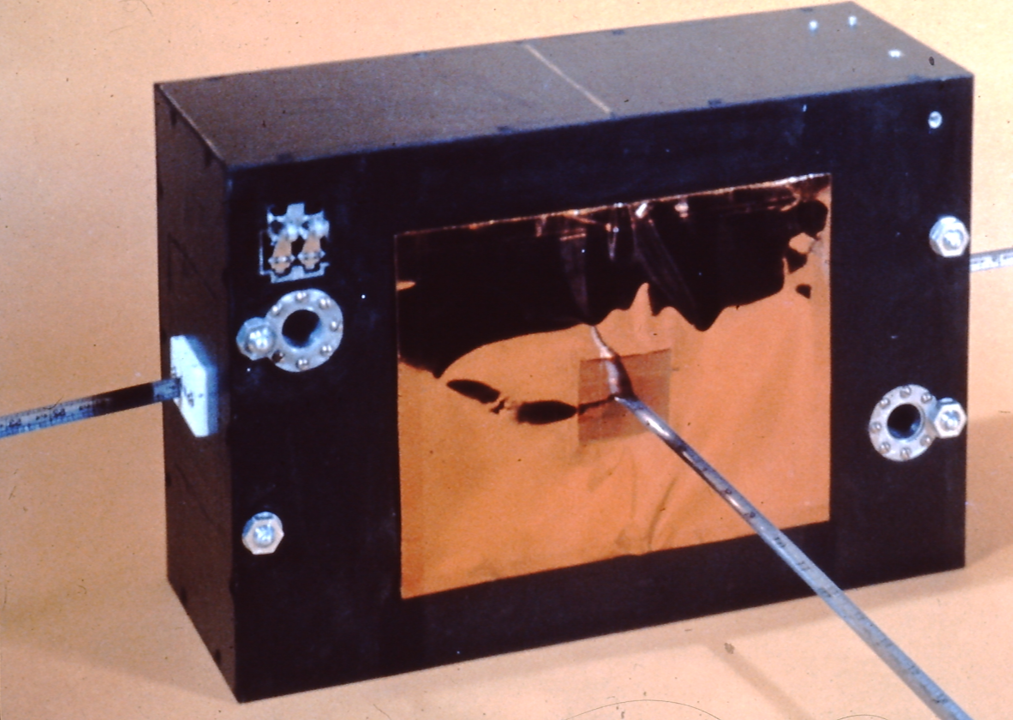



That's two subpar issues in a row for F&SF. One more and it's a disturbing trend. If they keep this up, they won't win a second Hugo in a row. Or maybe they will. IF managed it.
Anderson's take on the death of Bailey doesn't hold a candle to Ellison's, but then I doubt any of the others will either. That's a tall order. This one was a little too long; Poul could have pruned it a bit here and there. Otherwise it was good enough, but not great.
I probably would have given the Etchison two stars. It's not good, but I didn't want to fling the magazine across the room in anger or disgust either. Maybe I'm biased because I know what driving the Pasadena Freeway is like. Horribly narrow lanes and exits that expect you to handle leaving at freeway speed and then meeting a sharp hairpin after maybe 50 yards followed by a stop sign half that distance later.
"Harvest" was just dull. I barely remember anything about it and don't really care to refresh my memory.
Sprague's article was quite good. Nothing really new to me, but he told it concisely and well.
I didn't really like "Fun-nee." I found it too long, and it resolved too easily. Not awful, but very much not to my taste.
"The Chameleon" was fine. Reasonable, forgettable filler. At least it didn't have anything to do with Emmett Duckworth, though the invention in question could easily have been one of his.
Hopefully, Dr. A will make things clearer for the Traveler next month. That's the problem with him tackling subjects that need three or four times the space he has in a given month. It's easy to lose the thread.
"Neil Weaver" would have been improved by having at least one likeable character. Early on, I kept thinking that Fritz Leiber had done it all a lot better in "Conjure Wife," but Miller finally took things in a different, though unpleasant, direction.
I think the point of Neil Weaver is that the main character is unpleasant. But on the other hand, there's also a "well… who should I be rooting for?" phenomenon.